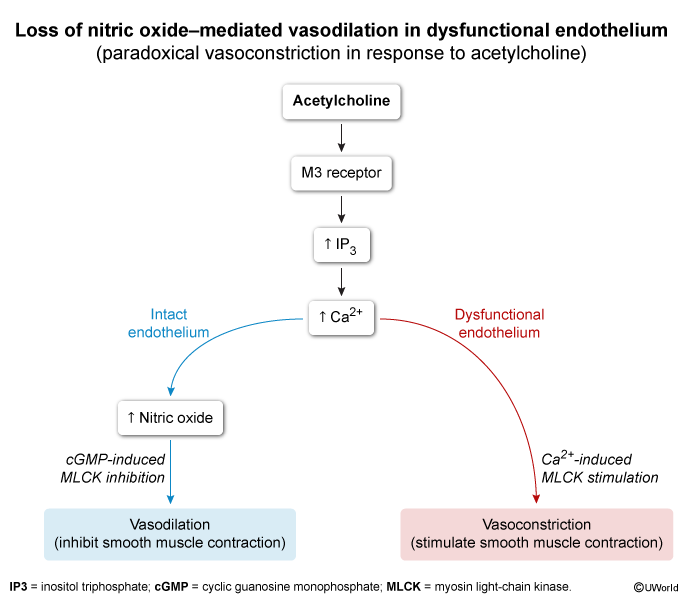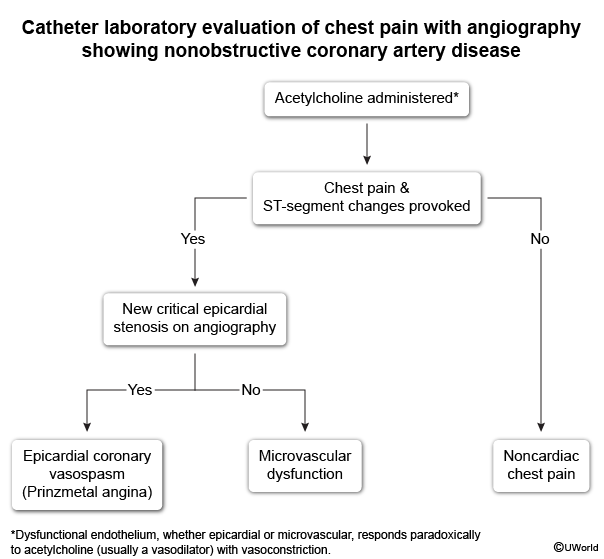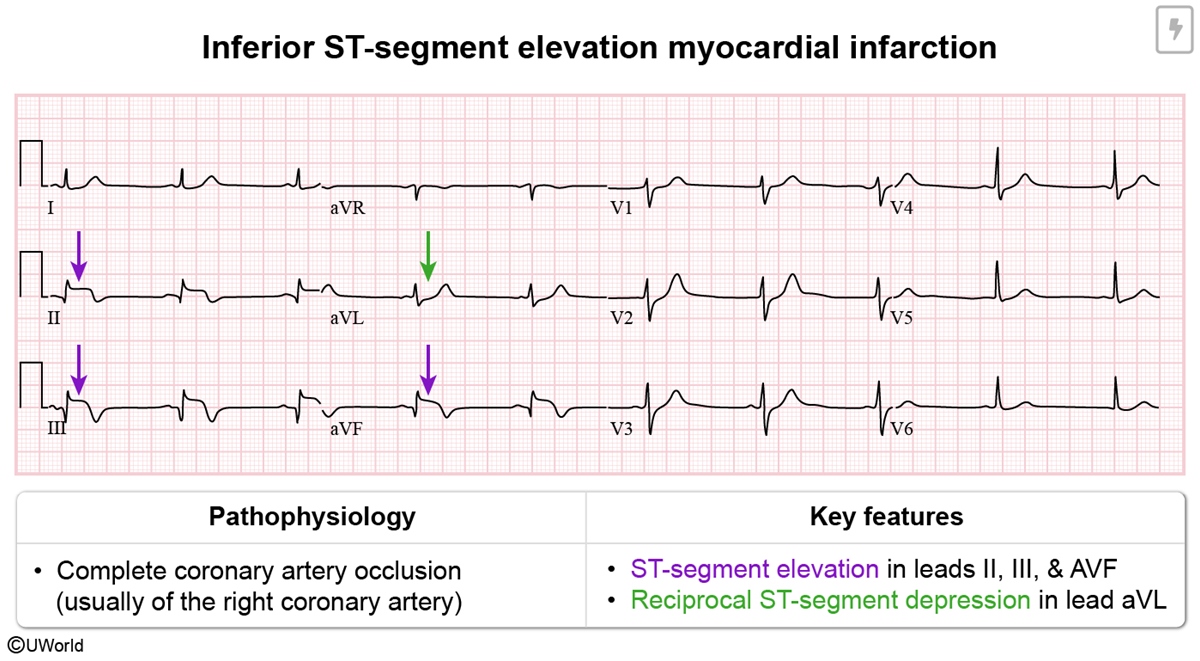Vasospastic (Prinzmetal) Angina
Article Sections
Introduction
Vasospastic angina (formerly variant or Prinzmetal angina) is characterized by intermittent coronary vasospasm, resulting in transient myocardial ischemia and angina. It most commonly affects relatively young patients (age <50) with minimal risk factors for atherosclerotic coronary artery disease (CAD); however, smoking is a strong risk factor, likely by contributing to endothelial dysfunction. Recognizing vasospastic angina is important for reducing symptoms and preventing serious complications.
Pathophysiology
Vasospastic angina likely results from a combination of endothelial dysfunction and autonomic imbalance. The major underlying defect is likely a deficiency of vasodilatory nitric oxide in the coronary artery endothelium, which causes the acetylcholine released from vagus nerve terminals to trigger vasoconstriction rather than vasodilation (Figure 1). Hyperreactivity of intimal smooth muscle in the coronary arterial wall can lead to focal or diffuse epicardial coronary vasospasm, resulting in transient myocardial ischemia and angina.
Continue Learning with UWorld
Get the full Vasospastic (Prinzmetal) Angina article plus rich visuals, real-world cases, and in-depth insights from medical experts, all available through the UWorld Medical Library.
Figures


Images
